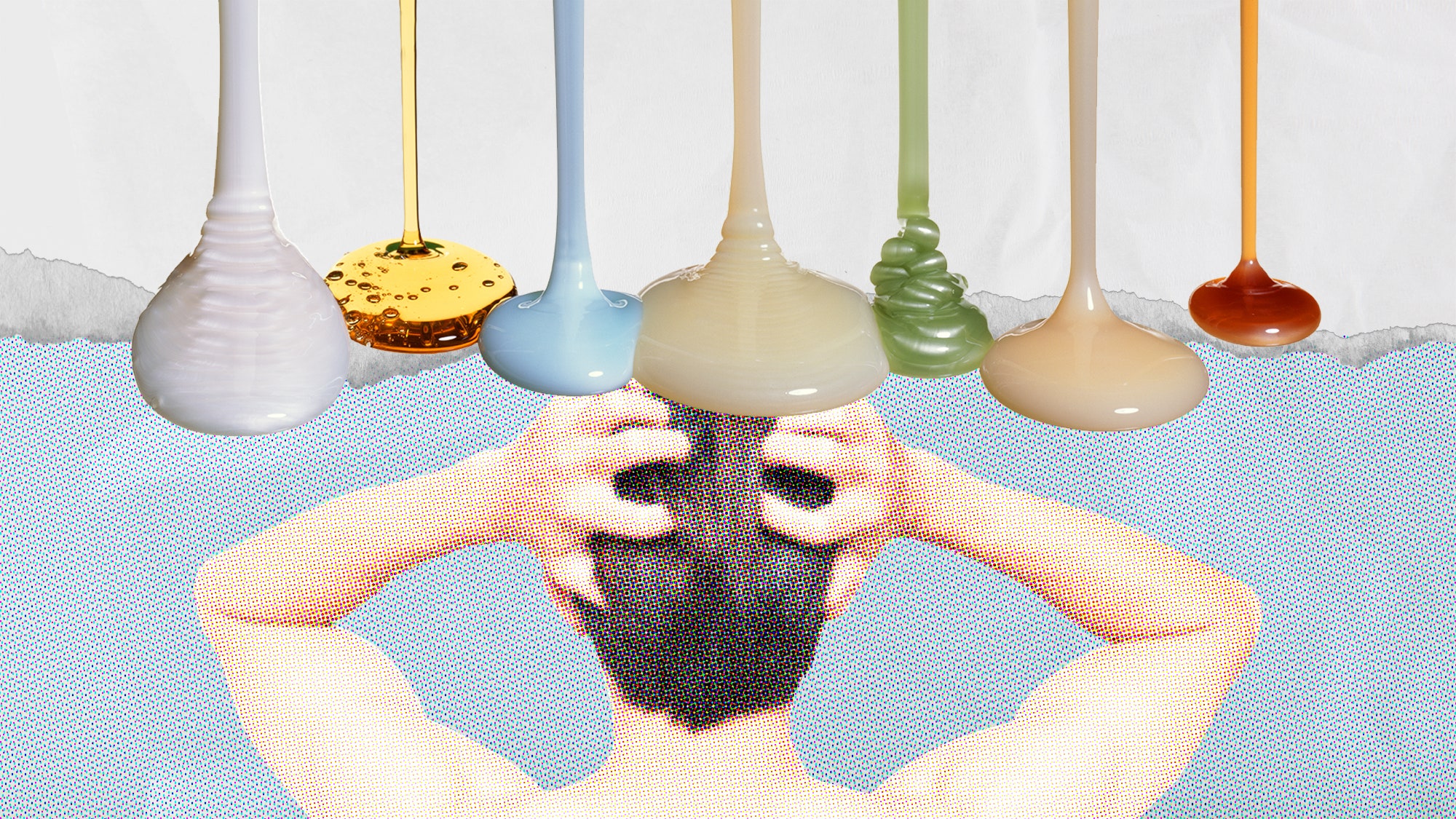
The first thing to know about how to prevent dandruff is that the scalp is a finicky thing. If it gets too oily, then it creates a terrific environment for fungus, which can lead to itching and flaking. If the scalp gets too dry, then it’s also prone to itching and flaking. So we’ve got to find a way to achieve balance and a happy and healthy scalp (for the sake of comfort and enhanced hair growth). Whether your dry scalp is a seasonal struggle or a year-round drag, read on for the combination of products and practices that will prevent dry scalp and dandruff before it happens. (And on the topic, check out our product-focused remedies for what to do if you’re currently dealing with acute scalp dryness and dandruff.)
How to Prevent Dandruff and Dry Scalp
1. Audit Your Scalp’s Natural Oil Levels
First things first: Your approach will change depending on whether or not you are starting from the dry end of the spectrum or the oily end. Yes, many of you are here because dryness is your primary problem. But some of you experience dandruff and itching as a result of excess oil, so this disclaimer is for everyone: People with a predisposition to dryness should focus on extremely moisturizing solutions, and people with a predisposition to oil should focus on sebum-balancing solutions. (As opposed to scalp-parching, scorched earth solutions.)
2. Have At Least One Proactive Scalp Product
Depending on your core problem (dry vs. oily predisposition), you should have at least one product in your regimen that helps balance your scalp. So, if you need to nourish and moisturize a dry scalp, a weekly scalp mask or daily hydrating serum will help prevent it from becoming dry.
Fable & Mane hydrating scalp mud mask
Harry’s moisturizing scalp cream
If you have an overproduction of oil, then an ingredient like tea tree oil or charcoal will be effective at cleansing the scalp. In the case of tea tree oil specifically, it is also antimicrobial and can prevent the formation and proliferation of fungus—while also balancing oil production. Charcoal, on the other hand, can purify the scalp while absorbing excess oil.
Tea Tree hair and scalp treatment
Briogeo scalp serum with tea tree oil and charcoal
3. Add One Dandruff Shampoo (Used Sparingly)
Unless you’re actively fighting a bad case of dryness, itching, and peeling, you don’t need to use dandruff shampoo every day. But it’s worth rotating a proactive shampoo into the mix once per month (or once per week, if you think it’s more beneficial to your case). For example, whenever my scalp is balanced, I still wash it with an anti-dandruff shampoo once per month, just in case. These can really parch the hair, so I always follow it with an ultra nourishing conditioner or hair mask, just to revive the strands. Look for anti-dandruff ingredients in a shampoo like salicylic acid, ketoconazole, or pyrithione zinc.
OUAI anti-dandruff shampoo with salicylic acid
Dove Men+Care anti-dandruff shampoo with pyrithione zinc
4. Rinse Daily (And with More Conditioner, Less Shampoo)
Do not shampoo every day. This is a shortcut to excess dryness. Even if you have an oily scalp, daily washing will train the pores to produce more oil in response, and you’ll be caught in a never-ending cycle. As such, switching to every-other-day washes (or ideally, every third day) will steadily train your scalp to be less oily. Regardless of sebum levels, though, the simple act of rinsing your hair and scalp daily will go a long way in flushing away any buildup of sweat, grime, and hair styling products (and the oil, too, if it’s an issue). Better yet, using a conditioner daily (or a co-wash, which is like a 75% conditioner, 25% shampoo) can nourish hair and scalp alike, while buying you extra time between shampoos. Don’t drop the washes altogether, though, as they’ll be paramount in keeping things clean. It’s just that you don’t need to wash up there every day, especially for the sake of your hair’s health. So unless you’re bald (in which case, just use a facial bar soap or cleanser up top), then take it easy.
Geologie co-wash
5. Take Shorter, Cooler Showers
The shower is often the #1 foe of scalp health, since most of us love taking long, hot showers. Regardless of temperature, long showers can rinse away too many of the oils that our skin needs to stay soft and nourished. And anything hot will magnify that 100-fold. So imagine what a hot 10-minute shower does for your scalp? (Not to mention, the havoc it wreaks on your hair strands.) Aim for sub-5-minute lukewarm showers—sorry—and you’ll hit the sweet spot. Check out our rules for better showers, too, which includes an order of operations so that you can get all the necessary steps down without wasting any water or time.
6. Get a Humidifier, and Mind the A/C
If you use this humidifier year round—or nix it in summer if you can sleep with the windows open—you’ll notice drastic improvements to your scalp.
Canopy humidifier
BEAR humidifier
7. Take Extra Care With Anything Harsh
Be mindful of anything that could undo any of your hard work. Things like using a blow dryer, swimming in a pool or in salt water, long flights or car trips with air conditioning, sun exposure on the scalp, and so forth. These aren’t things you need to avoid, but you need to adjust for them. Like, if you spend a sunny day swimming at the pool, then prioritize a scalp mask (and hair mask) that evening, and make sure you apply SPF to any exposed scalp spots. Blow dry on the cool setting, or with an ionic/ceramic/tourmaline dryer to get a faster, less parching finish—and apply your targeted scalp hydrator later that night, as well as the night before. And so forth.
8. Get a Professional Opinion
If your prevention efforts fall short, and if treatment efforts fail to remedy the matter, then you may need a professional opinion. Visit a dermatologist or trichologist; perhaps you have psoriasis, eczema, or another condition that needs more targeted solutions. These pros have seen it all, and they’ll be able to assess your specific condition (as well as your many life and environmental factors, like weather, water quality, etc) to find a remedy.

